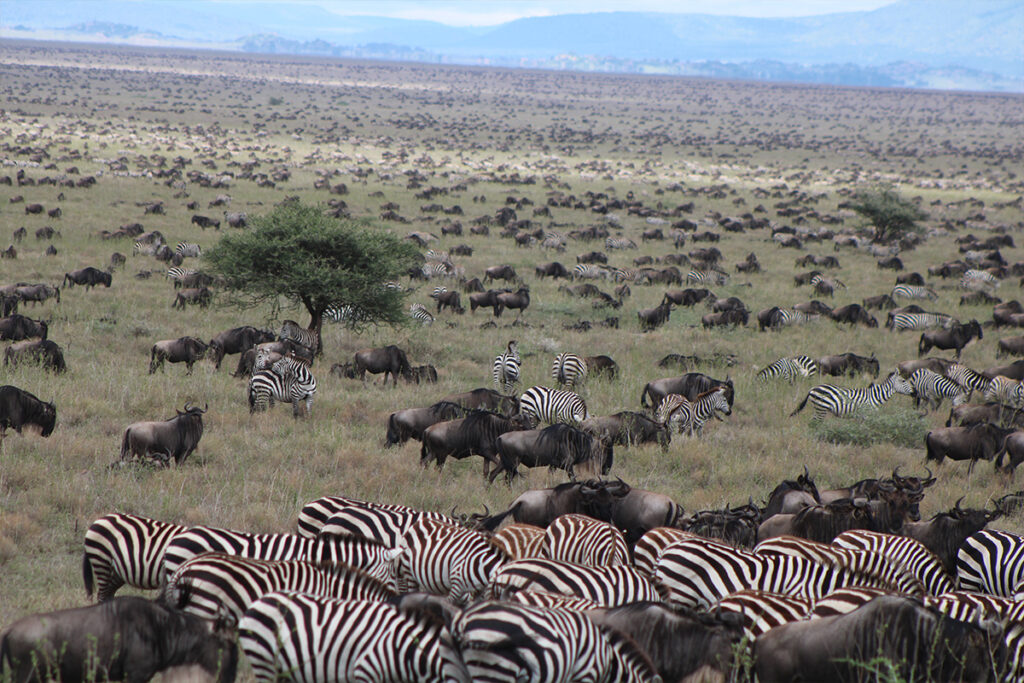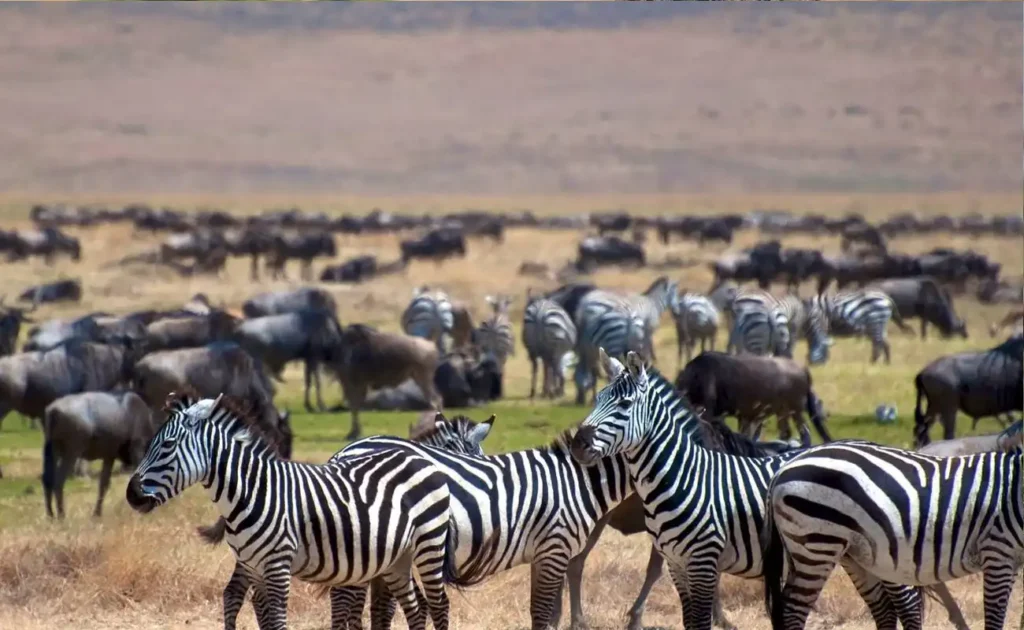Picture this: Kilimanjaro, a staggering 19,341 feet above sea level, attracts thousands of adventurers annually, yet not everyone is adequately prepared for the ascent. The allure of its snow-capped peaks can overshadow the world-class preparation it demands, even from seasoned climbers. What does it take to stay safe when confronted with such an imposing natural wonder?
Tracing its routes back to the endeavors of Hans Meyer in 1889, Kilimanjaro has long been a favorite among climbers. However, with only a 45% summit success rate, effective acclimatization remains pivotal. Understanding the terrain, selecting the right gear, and adhering to a slow and steady ascent are essential practices for those daring to conquer its heights.

Safety Tips: Staying Safe on Kilimanjaro
Climbing Kilimanjaro is an adventure many dream of, but it’s crucial to prepare carefully. The mountain’s altitude is one of the biggest challenges. As you climb higher, the air gets thinner, which can make breathing difficult. To stay safe, it’s essential to acclimatize properly. This means going slowly and taking regular breaks.
Wearing the right gear is also important. You’ll need layered clothing to adjust to varying temperatures. A sturdy pair of boots is a must to protect your feet on rocky paths. Don’t forget a good quality hat and sunglasses to shield from the sun. Packing the essentials can make your trip more comfortable.
The timing of your climb can affect your experience greatly. Kilimanjaro has different weather conditions throughout the year. The dry season, from June to October, typically offers the best weather. It’s safer and more pleasant because there’s less rain. More climbers choose this time for these reasons.
Your health and fitness level play a big role in a successful climb. Before starting your journey, it’s wise to see a doctor. They might recommend vaccinations or health checks. Being fit helps manage the physical demands of the climb. Consider starting a fitness routine a few months in advance.
Is Climbing Kilimanjaro Safe? (How to Reduce the Risk)
Understand the Altitude and Its Effects
Altitude sickness is a common problem when climbing Kilimanjaro. As you ascend, the decrease in oxygen can affect your body. Symptoms may include headaches, dizziness, and nausea. It’s essential to recognize these signs early. Ignoring them can lead to more severe conditions like pulmonary edema.
Acclimatization is the key to avoiding altitude sickness. This process allows your body to adjust to lower oxygen levels. Climbers should follow a gradual ascent profile. Spend extra nights at mid-altitude camps to help your body adapt. This strategy can significantly reduce the risk of altitude sickness.
Proper hydration is crucial at high altitudes. Your body loses fluids faster due to dry air and increased breathing rates. Drink plenty of water throughout your climb. Avoid alcohol and caffeine, as they can dehydrate you further. Staying hydrated helps maintain your energy levels and overall health.
Monitoring your oxygen levels can guide your pace. Using a pulse oximeter can provide real-time readings. If your oxygen saturation drops too low, consider descending. It’s always better to err on the side of caution. Knowing your limits and respecting them is vital for a safe climb.
Essential Gear for Climbing Kilimanjaro
Having the right gear is crucial for a successful climb of Kilimanjaro. Start with layered clothing to handle temperature changes. A base layer, insulating layer, and outer shell are key. This layering helps keep you warm, dry, and comfortable as you ascend. Weather can shift quickly, so staying prepared is essential.
Footwear is another critical aspect. Choose sturdy, waterproof boots with good ankle support. You’ll be trekking on various terrains, from rocky paths to muddy trails. Proper boots prevent blisters and injuries. Don’t forget comfortable socks for added protection.
Other gear includes essential accessories. A quality backpack is necessary for carrying gear like water bottles and snacks. Sun protection, including a hat and sunglasses, shields you from harsh rays. A headlamp is vital for any early morning or late evening hikes. Remember, visibility can change rapidly on the mountain.
Finally, a reliable sleeping bag is crucial for cold nights. Choose one suitable for low temperatures. A sleeping mat adds comfort and insulation. These items ensure a good night’s rest, which is important for maintaining energy. Comfort during your downtime can impact your overall experience.
Choosing the Right Season for Your Climb
Choosing the right season for your Kilimanjaro climb is essential for a successful adventure. The mountain has two main climbing seasons: the dry season and the wet season. The dry season, from late June to October and from late December to February, is the most popular. Climbers prefer these months due to less rain and better trail conditions. The mountain views are also more stunning without cloud cover.
However, the dry season also means more climbers. The routes can get crowded, especially during peak months. If you prefer solitude, climbing during the shoulder seasons might be better. These periods, just before and after the dry season, still offer good weather with fewer people. It’s a balance between ideal conditions and a peaceful experience.
Climbing during the wet season has its own pros and cons. The rains come in March to early June and from November to December. The mountain is lush and green during these months. However, the trails can be slippery and challenging. You will need to be more cautious and well-prepared for changing weather.
The good news is that the lower number of climbers during the wet season means less crowding. Those desiring a solitary experience will find these months more appealing. Despite the rain, some climbers enjoy the unique beauty of Kilimanjaro’s wetter season. However, the additional challenges require a higher level of preparation.
A table comparing the benefits and drawbacks of each season can help in the decision-making process:
| Season | Advantages | Disadvantages |
|---|---|---|
| Dry Season | Better weather, stunning views, easier trails | More climbers, crowded paths |
| Wet Season | Fewer climbers, lush scenery | Slippery trails, more rain |
Health Precautions and Fitness Requirements
Preparing your health and fitness is key for a successful Kilimanjaro climb. Before you pack your bags, consider visiting a doctor. They can check your overall health and offer advice on vaccinations. Vaccines like yellow fever and hepatitis A are often recommended. Staying healthy reduces risks while climbing.
Cardiovascular fitness is essential for trekking long distances. Regular aerobic exercises like running, cycling, or swimming can improve your stamina. Aim for at least 30 minutes of cardio, three times a week. Building this endurance will help you manage the mountain’s challenging conditions. Consistency in your training is crucial.
Strength training shouldn’t be overlooked. Strong legs and core muscles aid in tackling steep paths. Consider exercises like squats, lunges, and planks. Focus on exercises that mimic trekking activities. A balanced fitness routine provides a solid foundation for your climb.
Mental preparation is also important, although often ignored. Climbing a mountain involves long hours and physical strain, which can be challenging. Keeping a positive attitude and setting mental goals can help. Try meditation or other relaxation techniques to enhance mental strength. Being prepared mentally can make the climb more enjoyable.
Here’s a list of recommended health and fitness tips for climbers:
- Consult a doctor for health checks and vaccinations.
- Engage in regular cardiovascular exercises.
- Incorporate strength training into your routine.
- Practice mental preparation and stress relief techniques.
- Maintain a balanced diet to fuel your body effectively.
Navigation and Communication Strategies
Reaching the peak of Kilimanjaro requires both skillful navigation and effective communication. Maps and GPS devices are vital tools for climbers. They help plan routes and track your position during the climb. While paper maps are reliable, modern GPS units offer real-time navigation support. Having both can ensure you don’t lose your way.
Communication is equally important, especially in remote areas. Two-way radios can be indispensable for group climbs. They allow team members to stay in contact, even when separated. Mobile phones may not always have a signal, but radios work regardless of network coverage. It’s crucial for safety and coordination.
Hiring an experienced guide is another key strategy. Guides know the pathways and can read weather patterns effectively. They provide valuable advice and ensure the team stays on course. In unfamiliar territory, their expertise enhances safety. Having someone knowledgeable can be reassuring for climbers.
Creating a communication plan before you start the climb is wise. This plan should include important contacts and emergency numbers. Knowing who to call in case of an issue can save critical time. It’s also useful to decide on check-in intervals. Regular communication boosts safety and provides peace of mind.
Here’s a table that highlights navigation and communication tips for climbers:
| Tools | Purpose | Benefits |
|---|---|---|
| Maps and GPS | Navigation | Helps with route planning and location tracking |
| Two-way Radios | Communication | Maintains contact in remote areas |
| Experienced Guide | Navigation and Safety | Offers local knowledge and ensures team coordination |
Key Takeaways
- Acclimatize properly to avoid altitude sickness on Kilimanjaro.
- Wear layered clothing for changing mountain temperatures.
- Choose the dry season for better climbing conditions and views.
- Stay hydrated and monitor your health regularly during the climb.
- An experienced guide is crucial for safe navigation on the mountain.




